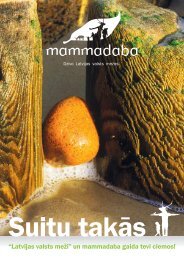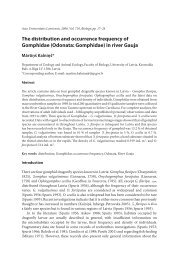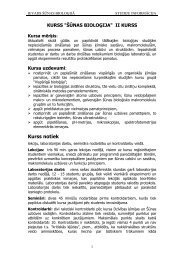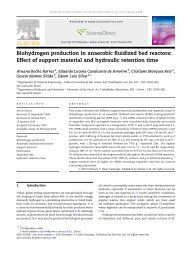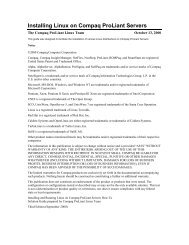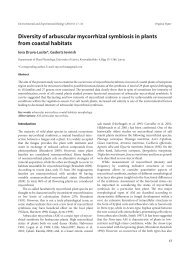Full Text (PDF) - Latvijas UniversitÄte
Full Text (PDF) - Latvijas UniversitÄte
Full Text (PDF) - Latvijas UniversitÄte
You also want an ePaper? Increase the reach of your titles
YUMPU automatically turns print PDFs into web optimized ePapers that Google loves.
Tick-borne encephalitis in Latvia 2002 - 2003 31<br />
Fig. 2. Seasonal activities of I. ricinus nymphs (Riga region, 2002 - 2003).<br />
month only a small number (12) of TBE cases was registered, and the seasonal morbidity<br />
peak was in July (Fig. 1)<br />
Clinical data reveal that the majority (about 60 %) of TBE clinical cases in 2002 and<br />
2003 were medium severity TBE meningeal form, about 30 % – febrile, and about 10<br />
% of cases were the severest form – meningoencephalitis. TBE lethality in the period of<br />
2002-2003 was 0.6 to 0.8 %: one lethal case in 2002 and three in 2003.<br />
Tick number seasonal changes<br />
Seasonal tick activity dynamics for I. ricinus adults registered in the monitoring site in<br />
Riga region (Tīreļi Forest Management District) indicated slight decrease in the tick<br />
activity in the season of 2003 in comparison with the previous year. The mean seasonal<br />
number of adult ticks per 1 km in 2003 (35.8 ticks per 1 km), but 1.45 times lower than the<br />
one in 2002 (24.6 ticks per 1 km) however statistically this difference was not significant<br />
(p > 0.05).<br />
However, I. ricinus nymph activity increased significantly in 2003, especially in the<br />
first decade of May and third decade of September (Fig. 2). The mean seasonal number<br />
of nymphs per 1 km in 2003 (51.8) was two times higher than in the previous year (25.5<br />
nymphs per 1 km).<br />
In total, 2404 samples of ticks (predominantly nymphs and females from I. ricinus<br />
habitat regions) were removed from patients and brought to the Vaccination service in<br />
2003, which was 3.4 times (p < 0.05) more than in 2002 (700 tick samples; Table 1). In<br />
several cases two to four ticks (almost only nymphs) bit patients simultaneously and the<br />
total number of collected individual ticks in 2003 was 2453, although only one sample per<br />
patient was tested for TBEV. The maximum number of ticks from patients in 2003 was<br />
collected by the Vaccination service in September, while a year before the peak number<br />
was registered in July. In 2002, 55 % (385/700) of removed ticks were adults (females),<br />
43 % (303) – nymphs and 1.7 % (12) – larvae (Table 1). In 2003, nymphs contributed<br />
the highest numbers of removed individual ticks – 57.9 % (1420/2453), 41.1 % (1008)<br />
were adults and 1.0 % (25) – larvae (Table 2). In 2003, 14 % of patients indicated being<br />
bitten by tick in Riga, 37 % – in different parts of Riga region, but the majority (48 %)





